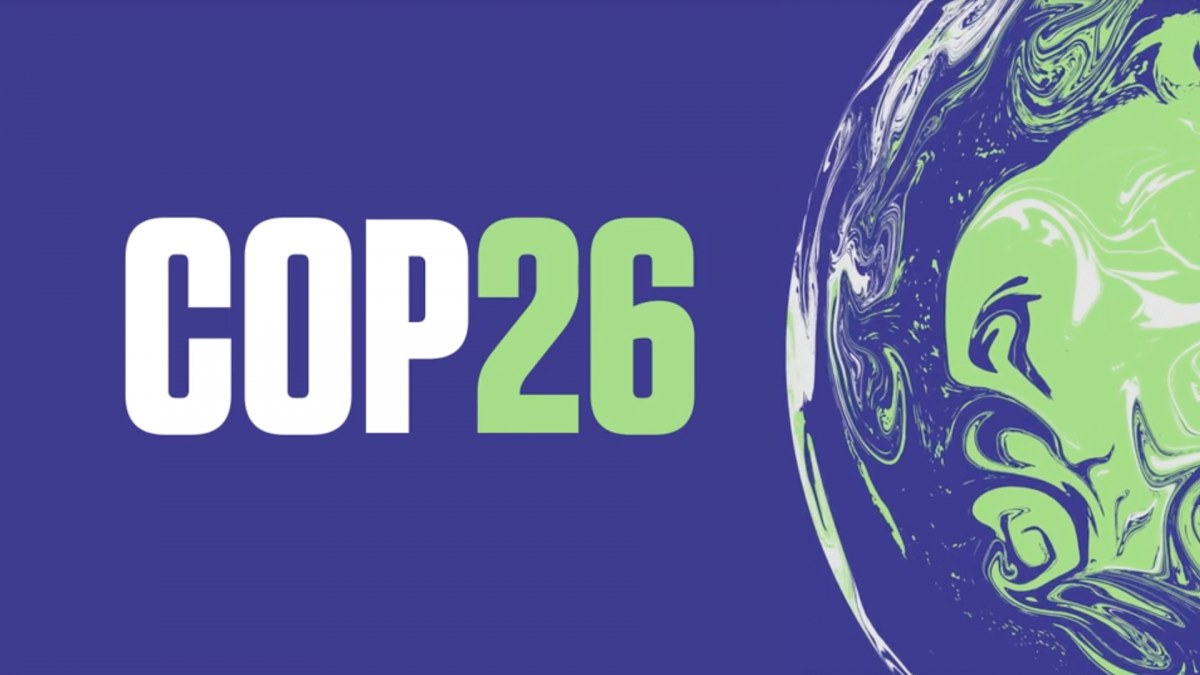

COP26 Recap

For two weeks in November leaders from around the world met in Glasgow for the 26th United Nations Framework Convention on Climate Change Convention of Parties, or more concisely COP26. COP26 aimed to be the kicking off point for a decade of accelerated action on climate change to meet the goals of the Paris Agreement and limit global warming to 1.5 degrees C. These two weeks of talks and negotiations resulted in the Glasgow Climate Pact.
Key elements of the Glasgow Climate Pact include increased ambition in mitigating (reducing) greenhouse gas emissions, phasing-down fossil fuels, and an increase in adaptation finance. The final text of the Pact makes it clear that participating nations' current reduction commitments are insufficient to achieve the goal of limiting warming to 1.5 degrees C, as such the Pact is requiring nations to submit new climate plans after a year rather than using the 5 year turnaround between plans from the Paris Agreement.
The Pact calls for a phase-down of coal and inefficient fossil fuel subsidies. This is the first time fossil fuels have been explicitly mentioned in a UN climate talk declaration. The final language on fossil fuels was weaker than earlier proposals, phase-down rather than phase- out, during the talks largely due to the intervention of India, a heavily coal dependent nation.
As climate change advances and nations have started to see impacts, the importance of adaptation has risen in international climate talks. The Pact specifically focuses on the impacts of climate change on developing countries stating, “current provision of climate finance for climate adaptation remains insufficient to respond to worsening climate change impacts in developing country Parties.” The Pact encourages wealthier developed nations to double their financial contributions to climate adaptation projects in developing nations, which, in addition to being unenforced, falls short of the UN estimate of a 10 times increase in adaptation spending in developing nations to avoid the worst effects.
Despite the attempt to reduce the unequal impacts of climate change through increased adaptation, funding from developed nations to developing nations COP26 made little progress on "loss and damage." Loss and damage in the context of the climate talks refers to compensation/reparations for loss and damage from climate change suffered by developing nations largely due to the emissions of developed nations. While there were dialogues on loss and damage no funds or financial structures were established.
Another major outcome of COP26 was that Article 6 of the Paris Agreement was finally given an operational framework. Article 6 is chiefly concerned with carbon markets and non-market financial incentives for climate action. Since the Paris Agreement was reached in 2015, action on Article 6 had been deferred due the complex nature of establishing global financial frameworks. Many large carbon market loopholes were closed but there still remains some opportunity for bad actors to game the system.
Much of the response to COP26 from world leaders & climate advocates centers around the acknowledgment that progress was made at COP26, while questioning whether the actions outlined & commitments made will be enough. Many expressed concern over the disproportionate representation of the fossil fuel industry at the talks and the weak language and many loopholes for the fossil fuel in the Pact. Additionally, climate justice advocates have expressed disappointment what they view as inadequate funding for adaptation, loss and damages, and developed nations failing to acknowledge their historic contributions to climate change.
Sources:
- IETA COP 26 Summary Report
- Five big takeaways from COP26
- Glasgow Climate Pact: Five things you need to know about the UN COP26 deal
- Key Takeaways From the Glasgow Climate Pact
- Climate 'loss and damage' earns recognition but little action in COP26 deal
- COP26: Fossil fuel industry has largest delegation at climate summit
- COP26 leaves too many loopholes for the fossil fuel industry. Here are 5 of them.
Rethinking Holiday Gifts

If you want to give your family and friends gifts without worrying to much about the environmental impact, here are some tips to give more sustainable, and often more meaningful, gifts:
- Give less gifts with more meaning. Most people would rather have one thing they really want, then a handful of things they kind of like.
- Buy second-hand. Buying used items reduces manufacturing and shipping emissions, plus shopping at the thrift store can be an fun experience as you never know what you might find.
- Give a reusable replacement for disposable things. For this one it's probably best to make sure your loved one wants something like this, as getting a reusable sandwich bag might not be fun if its unexpected, but if they're interested in sustainability like you are, this can be a welcome present! Online shops like Package Free Shop and Earth Hero sell reusable items and ship with low waste packaging.
- DIY your gifts. Making presents not only shows the person how much you mean to them, it can also be a fun holiday project.
- Gift experiences or a service. The best way to give an eco-friendly gift is to not give them a physical present at all. Taking someone to a museum or a concert, or making them whatever meal they want will create memories without creating lots of trash or pollution.
Whatever you choose, try to wrap it sustainably as well, whether that's in a reusable bag or box, or wrapping it with recyclable/compostable paper. Check out our Instagram post from last year for low-waste gift-wrapping ideas.
Real or Fake Christmas Tree: Which is Better?

If you feel bad about cutting down a tree to keep in your living room for a month, but still want to enjoy the holiday tradition, you might be considering getting an artificial Christmas tree to decorate. However, is getting a fake tree actually better for trees in the long run?
When you purchase a fake tree, they are often created in and shipped from China, resulting in carbon emissions. The materials the tree is made out of are often non-recyclable, meaning once you are finished with your artificial tree, it will end up in a landfill. You can reduce these problems by purchasing an artificial tree second-hand, but let's consider what buying a real tree every year does for the environment.
The general consensus among conservationists is that getting a real tree is less harmful to the environment than a fake one, and may even be helpful to forests! Purchasing a tree from a local tree farm keeps them in business and leads to them planting more trees every year. And with more than half of all forest-land in the U.S. being privately owned, supporting local sustainably managed forests is a good way to prevent wildlife habitat from being developed. Finally, at the end of its life, real trees can be composted and support more growth down the line.
So buy a tree guilt free! And If you're still feeling bad about getting a tree, or don't have space for one, here are some other festive alternatives: Can’t decide on a real vs. fake Christmas tree? Try one of these eco-friendly options
Source:
Events
- 12th International Mountain Day Celebrations at UVU. Dec 1, 12 PM, YouTube Live.
- December Healthy Cooking Demonstration: The Nutrition & Molecular Gastronomy of Cooking with Mushrooms. Dec 1, 5:30 PM, SLWC Demo Kitchen.
- Empowering Women and Youth Engagement in Sustainable Development, Elsie Ngowo Effange-Mbella Minister Plenipotentiary of Foreign Affairs Cameroon. Dec 2, 12 PM, LA 116.
- Map the System Competition Presentations. Dec 2, 6 PM, CB 101B.
- Sierra Club Utah Chapter Workshop: Restructuring the Narrative. Dec 14, 5:30 PM, Zoom.
Job Opportunities
- Environmental, Health and Sustainability Intern. Chromalox. Ogden, UT.
- 2022 Digital Communications Internship. HEAL Utah. Salt Lake City, UT. (closes December 3)
- 2022 Legislative Internship (Spring). HEAL Utah. Salt Lake City, UT. (closes December 3)
- 2022 Field Logistics Technician. Utah Conservation Corps. Logan, Cedar City, or Moab, UT.
- 2022 Field Crew Leader. Utah Conservation Corps. Logan, Cedar City, or Moab, UT.
- 2022 Field Crew Member. Utah Conservation Corps. Logan, Cedar City, or Moab, UT.
Academic Opportunities
- David R. Keller Sustainability Prize (closes December 15)
- Call for Proposals/Papers: 1st International Academic Conference on the SDGs: "Why it Matters"
- Call for Papers: Fostering a Culture of Sustainability through Outdoor Recreation and Education.
- Call for Papers: Justice and Equity Approaches to College and University Student Food (In)Security.
- EPA 2021 Environmental Education Grants. (closes December 6)

